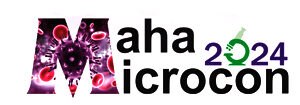Instructions For Abstract Submission
- Presenting author must register for the Conference and pay the appropriate registration fee.
Only one person (presenting author) will be allowed to present either Oral. - Presentation or Poster presentation.
- Only the presenting author will be given the Certificate of presentation.
- Define abbreviations and acronyms including standard measures. Mention special or unusual abbreviations in parentheses after the full word appears for the first time.
- Each abstract must be complete in all aspects.
- Abstract submitted should not be published/ presented anywhere else before presentation.
- Presenting authors will be intimated whether the abstract has been accepted in.
- Oral presentation or Poster presentation by the Scientific Committee.
- Abstract not as per the given guidelines will not be accepted. No separate correspondence/ intimation shall be made to author in these regards.
- Abstract should be uploaded on the website on the Abstract submission portal.
Specifications
- The abstract should be structured
- Word Limit – Strictly within 250 words
- Font Arial, Font size 12, UK spell-checked, Alignment – Justified
- Double spacing.
Abstract – 250 Words – Structured
- Background (should end with objectives of the study),
- Methodology (should clearly state study design tools used, study population and statistical tests applied)
- Results
- Conclusions
- Keywords (4-6)

Last Date of Abstract Submission 30th June 2024
Format of ppt Presentation
Please prepare maximum 15 slides as follows
- Title Slide:
- Title of the study
- Name(s) of Author(s)
- First author:Type the complete Name & Designation
- Co-authors:Type the complete Name & Designation. The co-authors should be cited in order of their contribution in the study; main contributors should be listed first.
- Name of the Institute
- Introduction – Provide the background to the problem/issue
- Objectives – State the purpose of the study (research question) or a hypothesis
- Methods – Methods used to address the objectives
- Results – Observations in summary form
- Discussion – Compare results with relevant studies, and limitations.
- Conclusion – Summary of your findings with recommendations
- References – using Vancouver Style
GUIDELINES FOR PREPARATION OF ORAL PRESENTATION
- Specifications for PPT: Font-Arial, font size-28+, UK spell checked, Font Color – Black, PPT background – White. Please do not use unessential animations.
- Final Oral Presentation must be prepared for a total of 7 minutes: 5 min for presentation (a bell will ring then) and 2 min for Questions & Answers.
- Please note that Session Chairperson has the right to terminate your running presentation in case you exceed the allotted time of 5 min + 2min.
- Presenters MUST ENSURE that there is no copyright & trademark violation in their presentation. Appropriate source, reference must be given.
- Presentation Schedule & Location/Venue will be intimated well before the date of the conference.
- Ensure to carry a soft copy of Oral Presentation file in a USB drive free from any malware/viruses to the venue in case of any technical issue in uploading the same. Keep a backup copy of your presentation in your own email. (Do not email the PPT)
- Arrive in the designated venue at least 20 minutes in advance. Ensure with the help of Venue Assistants that your presentation is already uploaded on the PC/Laptop which will be used for presentation.
GUIDELINES FOR PREPARATION OF POSTERS
- Include abstract title and all authors at the top.
- Poster should fit on a board that is 4ft x 2.5ft (Height X width) in portrait form.
- Do not use ALL CAPITAL letters.
- Use graphics (charts, tables, pictures) that can be understood in one minute or less.
- Ideas should flow from panel to panel logically.
- Assume the viewer is reading your poster from approximately 3 feet.
- Describe in the following format:
- Background – Provide the background to the problem/issue
- Objectives – State the purpose of the study (research question) or a hypothesis
- Methods – Methods used to address the objectives
- Results – Observations in summary form
- Conclusion – Summary of your findings with recommendations
- Important references – using Vancouver Style (optional)

